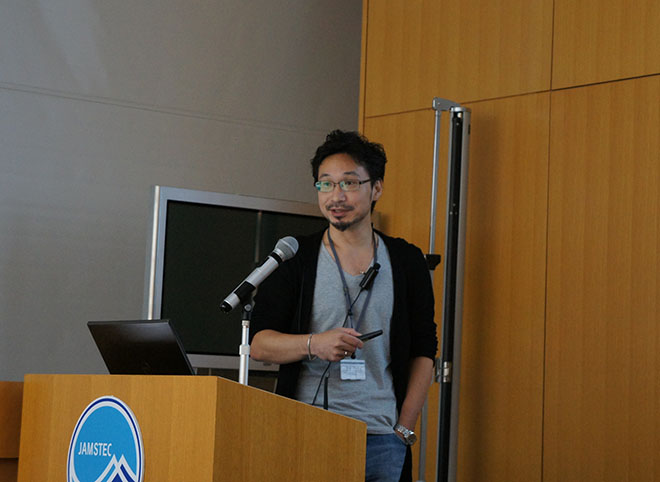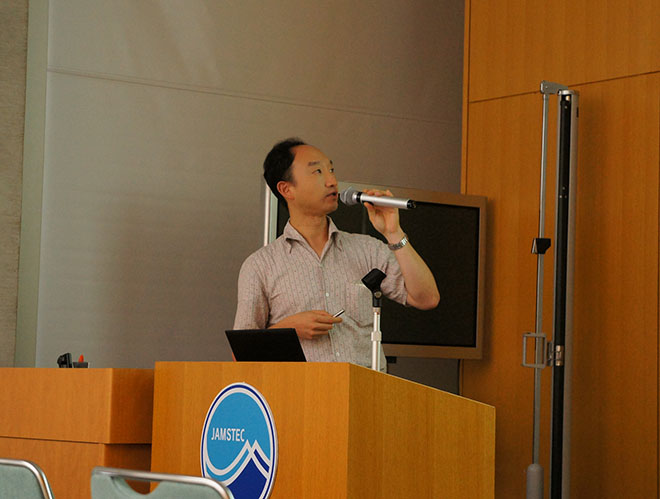- 【Members ONLY】
14:00 - 16:15, September 16, 2016. Miyoshi Memorial Auditorium, Yokohama Institute of JAMSTEC
Agenda
| 13:30 -- 14:00 | 13:30-14:00 Administrative issues (R. Suzuki) |
| 14:00 -- 15:00 | Topic 1: Masayuki Kondo
|
| 15:15 -- 16:15 | Topic 2: Yugo Kanaya
|
Abstracts
Masayuki Kondo
"Neutral-phased El Nino-Southern Oscillation drives Southeast Asia’s CO2 uptake in the 2000s"
In Southeast Asia, regional climatic conditions are directly influenced by the El Nino Southern Oscillation (ENSO) and land use change (LUC) emissions account for a major fraction of the global total. However, insufficient knowledge about interactions between climate and LUC on terrestrial biogeochemical cycle remains an obstacle for understanding the past and present status of net CO2 flux in Southeast Asia. Using multiple approaches for flux estimation, we show that decadal net CO2 flux in Southeast Asia shifts towards a net source from the 1980s to the 1990s due to the increased LUC emissions, and towards a net sink from the 1990s to the 2000s partly due to the enhanced CO2 fertilization effect and, particularly due to the absence of strong El Nino events during the 2000s. Our findings suggest that net CO2 flux in the 2000s is unaffected by strong CO2 releases associated with El Nino such as peat and deforestation fires and enhanced plant respirations associated with increases in temperature, resulting in the near neutral net CO2 balance. A further analysis indicates large CO2 emissions in 2010?2015 due to recurring strong El Nino, which in turn emphasizes the uniqueness of the climate condition in the 2000s.

Yugo Kanaya
"Progress in the observational research of short-lived climate pollutants (SLCPs): from Asia/Pacific to the Arctic"
Short-lived climate pollutants (SLCPs), such as black carbon and tropospheric ozone, are found to contribute to global/arctic warming significantly and therefore they are recently deemed as effective control target. However, our knowledge of their atmospheric chemistry and physics, including emission/production, transport and loss/deposition is not sufficient such that the control is optimized. Particularly Asia is regarded as a hot source area but the emission/production rates are not well constrained. In this talk, after presenting the significance of pollution in this region, recent findings from long-term observations at Fukue Island since 2009 are highlighted, particularly on black carbon. The observed data for six years were categorized into two classes, i.e., with and without a wet removal effect, using the accumulated precipitation along a backward trajectory (APT) for the last 3 days as an index. Statistical analysis of the observed DeltaBC/DeltaCO ratios was performed to obtain information on the emission ratios (from data with zero APT only) and wet removal rates (including data with nonzero APTs). The estimated emission ratios were higher for south-central East China than for north-central China and had wintertime enhancement, likely affected by the domestic emissions. Although the bottom-up emission inventory (e.g., REAS2) captured these tendencies qualitatively, large overestimation for central East China and Korea was noticed. Wet removal of BC was clearly identified as a decrease in the DeltaBC/DeltaCO ratio against APT. The removed fraction was fitted reasonably well by a stretched exponential decay curve against APT. This fit can be used to test and improve the chemistry and climate models. More data will be collected using R/V Mirai, to further verify how far BC particles will reach from Asia, particularly whether they are transported to the Arctic regions or not. Other new directions of studies on ozone budget are also presented when time permitting.
- 【Members ONLY】


